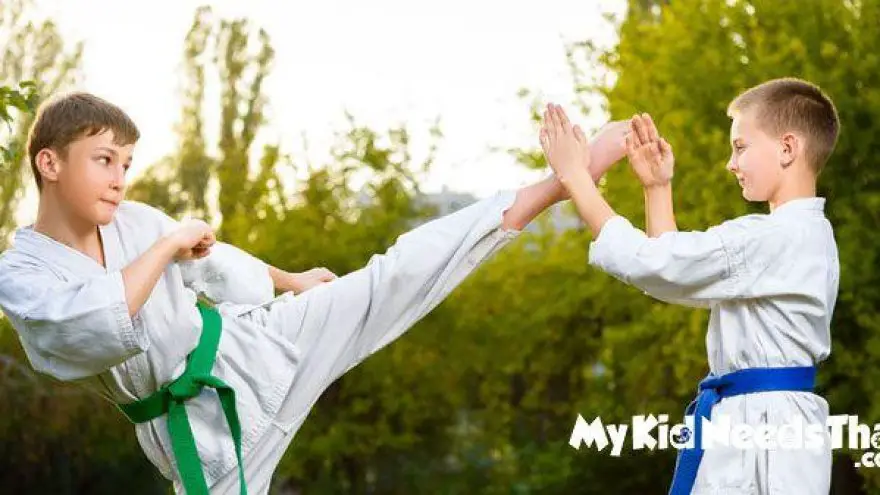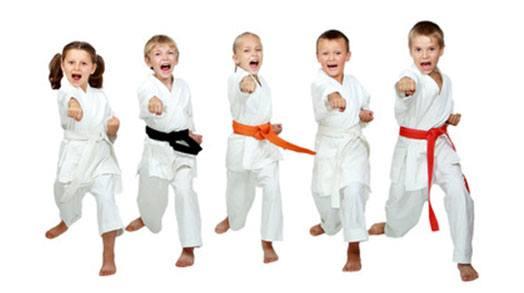3 Best Martial Arts for Kids Fully Reviewed

There are some parents who don’t like their kids to learn martial arts because it is believed that doing so promotes the use of violence. On the contrary, science and leading child development experts agree that martial arts can actually teach children a lot of things. Kids who learn martial arts eventually learn discipline, self-control, focus, concentration, and socialization. This is the reason why many parents who have kids with attention deficit hyperactivity disorder choose to enroll their children in these programs because it teaches them concentration and self-control, two things that are not fully developed in kids with ADHD. Of course, martial arts also help enhance children’s fitness and overall wellbeing. That being said, martial arts are a great way to channel your child’s immense energy in more constructive ways. The question now will be what martial art is best for your kid. While there are many types, here are the 3 best martial arts for kids.

Karate
In the 80s, almost every other kid wanted to be like Ralph Macchio under the tutelage or Mr. Miyagi, Pat Morita, playing the part of the Karate Kid. But karate was not developed in the 80s; it was developed in the 13th century as a common fighting style in the Ryukyu Kingdom, present-day Okinawa. It was only by the 20th century, however, that karate has been brought to the Japanese mainland. By the end of World War II, the US built a military installation in Okinawa and it is during this period that the 13th century karate of the Ryukyu islands were formally introduced to the West. The 60s and 70s saw the increasing use of karate in films, further adding to its popularity. Today, there are more than 100 million karatekas all over the world. And your kid just might add up to this growing number.
Karate is simply the way of the empty hand emphasizing the fact that karatekas never uses any weapon of some sort. The focus of karate is on striking one’s opponent using punches, kicks, elbow strikes, knee strikes, as well as open-hand techniques. Throws, restraints, grappling, vital point strikes, and joint locks can also be used. The point is for the karateka to use very quick, sharp actions that typically involve purposeful snapping movements especially at the joints. It should be understood that many of the karate moves have been based on the more ancient martial art of Chinese Kung Fu, particularly the Fujian White Crane.
Why should you enlist your kid in karate? Here’s why:
- It builds self-confidence.
- It helps develop their social skills.
- Itinstills discipline.
- It improves flexibility.
- It keeps him or her physically fit.
- It helps in focusing.
- It encourages setting of goals.
Learning karate means kids will have to push themselves and strive to move well beyond their comfort zones. For one, they will have to learn how to establish eye contact so they will know just when to strike. Establishing eye contact, let alone maintaining it, requires a certain degree of focus. Once your kid is able to master this, he or she will be able to build his or her self-confidence.
Discipline is one of the fundamental learning points of any martial art. Karate teaches your kid to follow rules and instructions. It takes focus and sheer will to make oneself abide by the rules imposed by others. If kids are able to find the courage and strength to abide by and follow the established rules, then he or she will grow up to be an excellent individual.
Karate teaches kids to be highly flexible because of the lightning quick moves that the martial art encourages. Flexibility, however, requires tremendous amounts of training which, in turn, can help any child reach a certain level of physical fitness.
One of the things that people don’t understand about karate is that it is more about trying compete with oneself. Karatekas always try to achieve perfection in what they do. They strive to train their minds and bodies to become one. In real life, karate teaches kids to set goals. This provides direction for kids and this is what helps them to find success in their chosen fields of endeavor.
Kung Fu
Kids love Poh and the Furious Five. Adults, on the other hand, always look to Jackie Chan or even Jet Li for all those lightning quick moves that have come to put Kung Fu in the world map. No longer is it a Chinese martial art; it has become a global phenomenon. Unfortunately, a lot of people are actually baffled by what Kung Fu really is. While everyone knows that Kung Fu is a Chinese martial art, not everyone understands that it is, in fact, a way of life. The main idea in learning Kung Fu is becoming the best that one can ever be. It talks about an individual accomplishment that can only be achieved after putting a lot of effort into it.
Kung Fu has always had spiritual and philosophical significance. For instance, the concepts of Yin and Yang are conspicuously tied to the soft and hard techniques in Kung Fu. It has also been tied to some Confucian principles where practicing a particular craft will result in perfection of that particular craft. However, whenever Kung Fu is depicted in movies today, it is almost always associated with Buddhism primarily for their perseverance to achieve harmony and balance with the universe. We are always shown very young Buddhist practitioners, with their cleanly shaven heads, do a lot of Kung Fu training with the hope that one day they will be able to perfect their chosen path.
Getting children into Kung Fu can bring about a variety of benefits. For instance, learning Kung Fu can:
- Teach kids about restraint and humility
- Help kids to control the self
- Instill discipline in kids
- Promote flexibility of joints in kids
- Teaches kids how to focus and concentrate
- Keeps kids in excellent physical health.
It should be understood that Kung Fu is all about achieving perfection in one’s endeavors. Kids will learn how to use focus, will, and determination to achieve who they want to be. This can have a significant impact in other aspects of their lives. For instance, studying their lessons will be a lot easier for the simple fact that they now have gained mastery over themselves, including how they can harness their skills in the achievement or accomplishment of something.
Learning Kung Fu also teaches kids about harmony and balance. It makes them fully cognizant of the things and the events around them and helps them understand the complex relationship of things. They are able to form a deeper understanding of their relationship with the world around them which can also help in the formation of a healthier self-esteem and self-concept.
Additionally, learning Kung Fu teaches kids about using their minds to achieve something that they want. This helps sharpen their critical thinking as well as logical reasoning skills which, in turn, can improve their other cognitive abilities.
Aikido
Not many understand what Aikido really is. For us adults we only associate it to the martial arts moves of Steven Seagal in many of his action films. The very fluid movement of his actions never fails to draw some sense of admiration among viewers.
If Karate is the way of the empty hand, Aikido is the way of harmony of the spirit. You see, despite its nature as a martial art, O Sensei MoriheiUeshiba has always advocated for the achievement of peace and harmony using Aikido. Unlike other forms of martial arts, however, Aikido does not involve striking an opponent or kicking or even punching someone else. The principle is quite easy to understand, yet very difficult to master. When used as a defensive art, Aikido utilizes the opponent’s energy or force and redirects this back to its source. In simple words, if someone will be punching you, with Aikido, you will be redirecting this punch back to the person. In essence, the person will be punching himself.
This is the reason why Aikido, while it doesn’t involve striking or punching or kicking, it requires a very fluid motion. This is what young kids have to learn: how to move with the force of their opponent so that this energy can be channeled back to their opponent. It takes years of dedication to really understand and master the techniques of Aikido.
When you enroll your kid to an Aikido class, he or she will:
- Learn how to remain calm and use gentle energy in their pursuits
- Develop inner peace and confidence as well as self-esteem
- Learn how to set and achieve objectives or goals
- Learn how to use non-violent means of resolving conflicts
- Enhance self-discipline
- Boost his or her socialization skills
- Instill respect in himself or herself
The Bottom Line
Getting your kid to a martial arts class can have a lot of benefits. However, it is also important to choose a dojo that can incorporate some form of fun learning in their martial arts training. This way, it will not be too harsh on your kid especially if he or she is still technically too young to understand why he or she is doing martial arts.
Like What You See? Please Rate This Post And Let Us Know What You Think!
[rating_form id=”1″]
[wp-subscribe]







